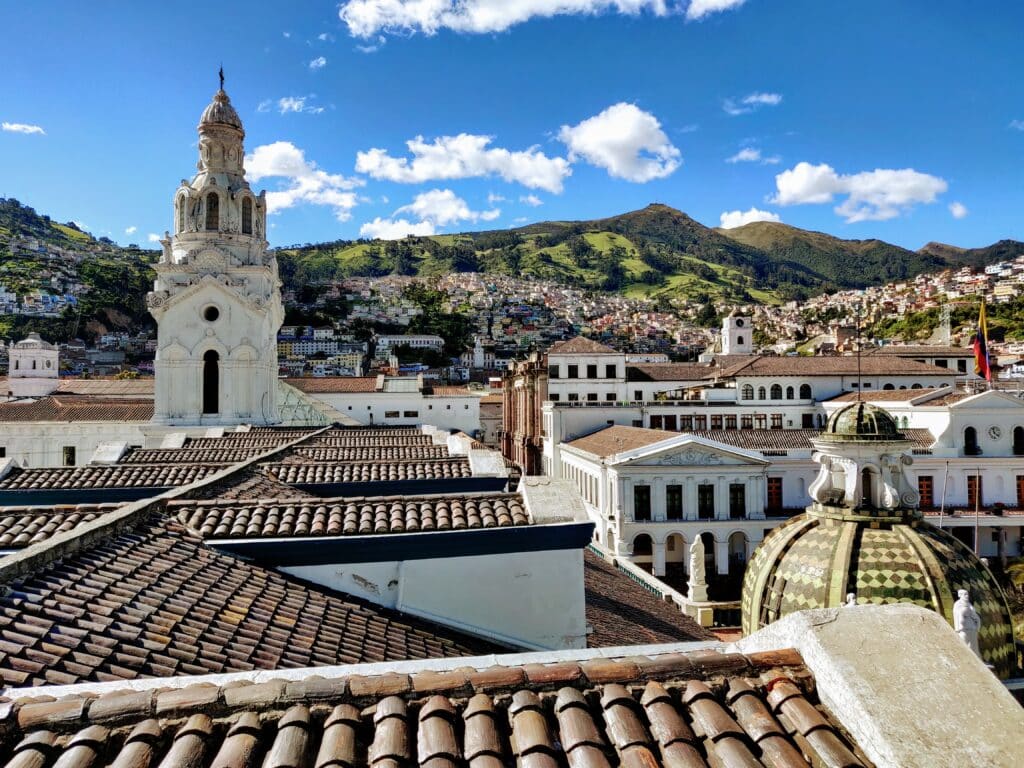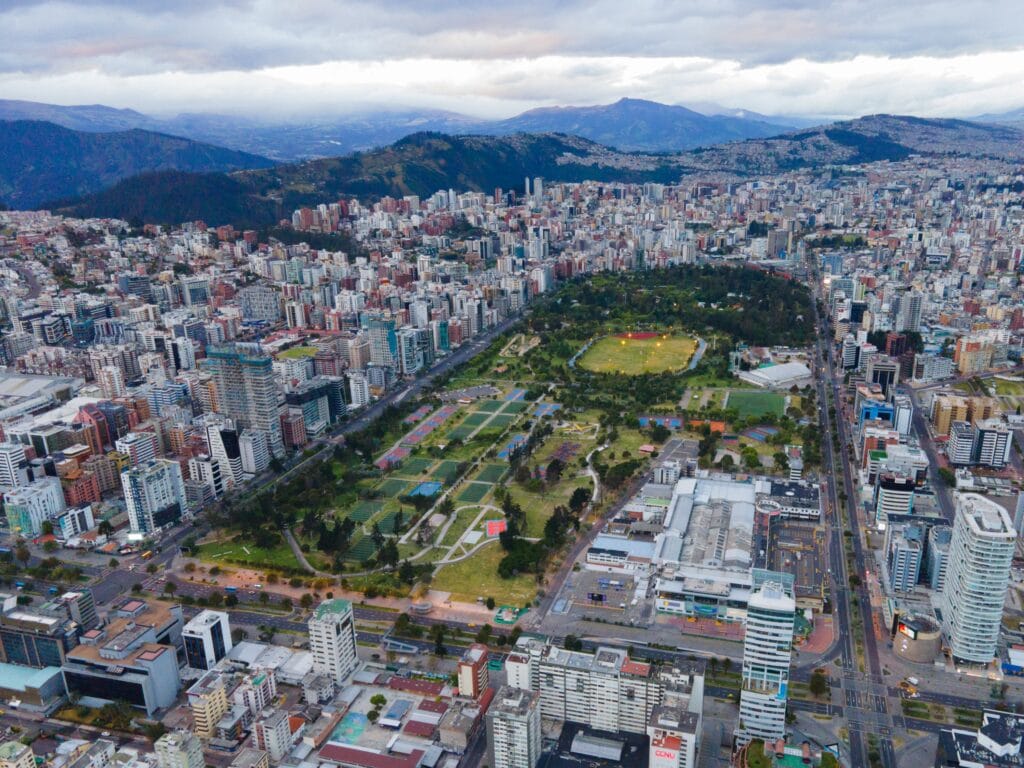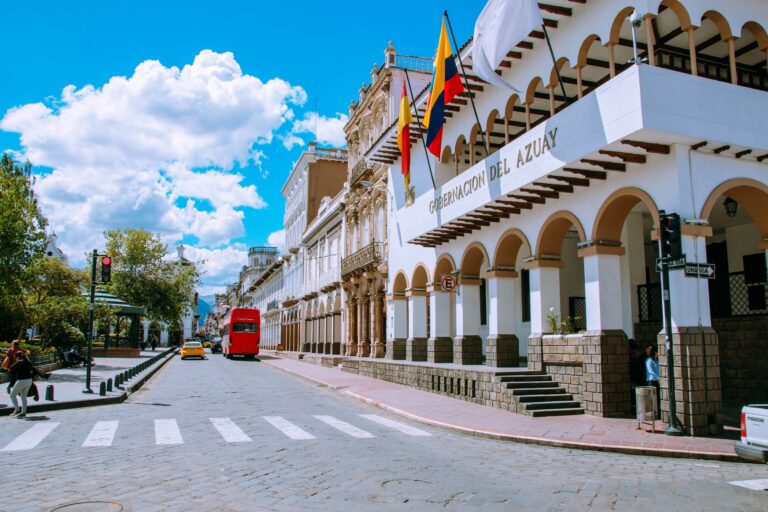If you are living abroad and want to send money home to Ecuador, or if you are planning a visit to this South American country, you may need to convert your Canadian dollars, euros, pesos, or other currency into U.S. dollars. That is because the U.S. dollar is the official currency of Ecuador — and it has been for over 20 years.
5 Facts About Money in Ecuador
1. The old Ecuadorian currency was called the “sucre.”
The Ecuadorian Sucre banknotes were the legal tender of Ecuador from the late 1800s until the year 2000. It was issued by the Banco Central del Ecuador (Central Bank of Ecuador).
The sucre got its name from Antonio José de Sucre, the president of Bolivia in the early 1800s, who was a widely respected leader in Latin America and the liberator of what is now Ecuador.
At the time of his presidency, Sucre wanted to form an independent nation and become its first president. He wanted independence from Spain and the liberation of Latin American territory. He was assassinated in 1830.
Although the sucre is no longer in use, it still represents an important part of Ecuador’s history.
2. The U.S. dollar replaced the sucre in 2000.
By the end of the 20th century, Ecuador was experiencing significant economic instability. Bursts of inflation were causing prices to skyrocket and the sucre’s foreign exchange value became worth less and less. In 2000, Ecuador decided to replace its own currency with U.S. dollars.
The switch made use of Ecuador’s trade surplus; by selling more oil and other products for U.S. dollars, it could bring more money into circulation. Ecuadorians had a limited time to exchange their sucre for dollars at a fixed rate.
Since the transition, Ecuador’s inflation rates have stabilized and, on average, the economy has grown.

3. Ecuador has a long history of currencies.
The sucre had been the official currency of Ecuador for many decades by the time it was retired. Between 1884 and November 1898 it was backed by silver, and from 1898 to 1914 it was backed by gold. In 1914 it became unconvertible. The gold standard returned in 1927, ending a few years later in 1932.
But the sucre was not the first currency used in Ecuador. In the 1800s, President Vicente Rocafuerte oversaw the use of a number of different coins as Ecuador became a state and eventually a republic. The coins were a mix of foreign-minted and Ecuadorian-produced coins.
Ecuadorian money throughout that century included the “peso fuerte,” the “franco,” and another version of the peso before the sucre became standard in 1884.
4. Ecuador’s exports are a major part of the economy.
Petroleum is Ecuador’s largest and most significant export, but it is not the only one. Ecuador also exports more bananas than any other country in the world. Other major exports include shrimp, gold, cocoa, sugar cane, fruit, and even cut flowers.
5. Many Ecuadorian citizens send money home from abroad.
From 1976 to 2020, remittances — that is, money sent home by Ecuadorians living outside the country — made up an average of 2.94% of the country’s gross domestic product (GDP). As of 2020, the total amount sent was over $3 billion U.S. dollars.
Exchange Rate
To find the current exchange rate for sending money to Ecuador, check out today’s rates with Remitly.
Where Can Travelers Exchange Currency in Ecuador?
Travelers heading to Ecuador can exchange their US currency conveniently in major cities such as Quito, Guayaquil, and Cuenca. Private banks and exchange bureaus offer competitive exchange rates, making it easy to convert your money upon arrival. It’s advisable to compare rates before exchanging, as rates can vary significantly from one location to another. Additionally, most banks provide exchange services during regular business hours, ensuring you can get the local currency whenever needed.
For those arriving at the airports, you’ll find exchange services available at Quito International Airport and Guayaquil Airport, where you can quickly convert your cash. Using private banks often yields better exchange rates compared to kiosks in tourist areas. Always remember to carry smaller bills for everyday transactions, as some establishments may have difficulties providing change for larger denominations.
About Ecuador
Ecuador is located in the northwest part of South America, on the Pacific coast. The country’s population is about 17.6 million. Its largest city, Guayaquil, is home to about two million people, and another 1.4 million live in the capital city of Quito.
Ecuador is known as one of only 17 “megadiverse” countries in the world. Its ecosystems include the coastline, the Andes mountains, the Amazon rainforest, and the Galapagos Islands, which are located far off the coast. The country plays an important role in ecological preservation.
Ecuador’s history dates back thousands of years. Early inhabitants of what is now known as Ecuador were part of the Inca civilization. After a period of Spanish colonization, followed by about eight years as part of a confederation called Gran Colombia, Ecuador became an independent republic in 1830.

What Currency is Used in the Galapagos Islands?
In the Galapagos Islands, the U.S. dollar is also Ecuador’s official currency, just as it is on the Ecuadorian mainland. This means that travelers can use U.S. dollars for all transactions, simplifying the budgeting process for your trip. While cash is widely accepted, it’s important for visitors to be aware that ATMs are limited on the islands, particularly in more remote areas.
Because of this, it’s advisable to bring sufficient cash to cover your expenses, especially for tours and activities that may not accept credit cards like Visa. Additionally, keep in mind that while U.S. coins are accepted, Ecuador mints its own centavo coins, which can only be used within the country. Having a mix of cash on hand will ensure a smoother experience during your visit to this unique archipelago.
Sending Money to Ecuador
You can send money to Ecuador with Remitly. New customers may be eligible for a special offer on their first transfer. Send money to your loved ones in Ecuador safely and securely with Remitly.
Can You Use Credit Cards and ATMs in Ecuador?
Credit cards are widely accepted in larger establishments such as hotels, restaurants, and shopping centers, but it’s important to note that smaller businesses, markets, and street vendors often prefer cash. When using a credit card, be prepared for a transaction fee that typically ranges from 4% to 8%. Additionally, some businesses may require you to present identification for security purposes when making a purchase with a credit card.
ATMs are readily available in major cities and towns, providing access to cash withdrawals at ATMs with your debit or credit card. Most ATMs have a daily withdrawal limit, usually around $500, and a fee of approximately $5 to $8 per transaction may apply. To ensure your safety, it’s best to use ATMs located inside banks or reputable locations. Always notify your bank before traveling to Ecuador to prevent any unexpected transaction blocks.
FAQ: Money in Ecuador
What currency does Ecuador use?
Ecuador uses the U.S. dollar (USD) as its official currency. The country adopted the dollar in 2000 to stabilize its economy after a financial crisis. U.S. coins and bills are used for everyday transactions, though Ecuador also mints its own centavo coins, which are equivalent to U.S. cents.
Can I use credit or debit cards in Ecuador?
Yes, credit and debit cards (Visa and Mastercard in particular) are widely accepted in cities, tourist areas, and major businesses. However, cash is still preferred for small purchases, transportation, and rural areas. It’s best to carry small denominations.
Are there ATMs in Ecuador?
ATMs are available in most cities and towns. They dispense U.S. dollars and often offer instructions in English. Just be sure to notify your bank before traveling and check for foreign transaction or ATM withdrawal fees.
Does Ecuador accept U.S. coins and bills of all sizes?
U.S. coins and small bills (like $1, $5, and $10) are commonly used and easily accepted. However, larger bills such as $50s and $100s may be refused by shops due to concerns about counterfeit currency. Stick to smaller denominations when possible.
What’s the best way to send money to Ecuador?
Money transfer services like Remitly offer secure, affordable ways to send money to Ecuador from abroad. Funds can be delivered to bank accounts, picked up in cash, or even delivered to a recipient’s home depending on the service chosen.

